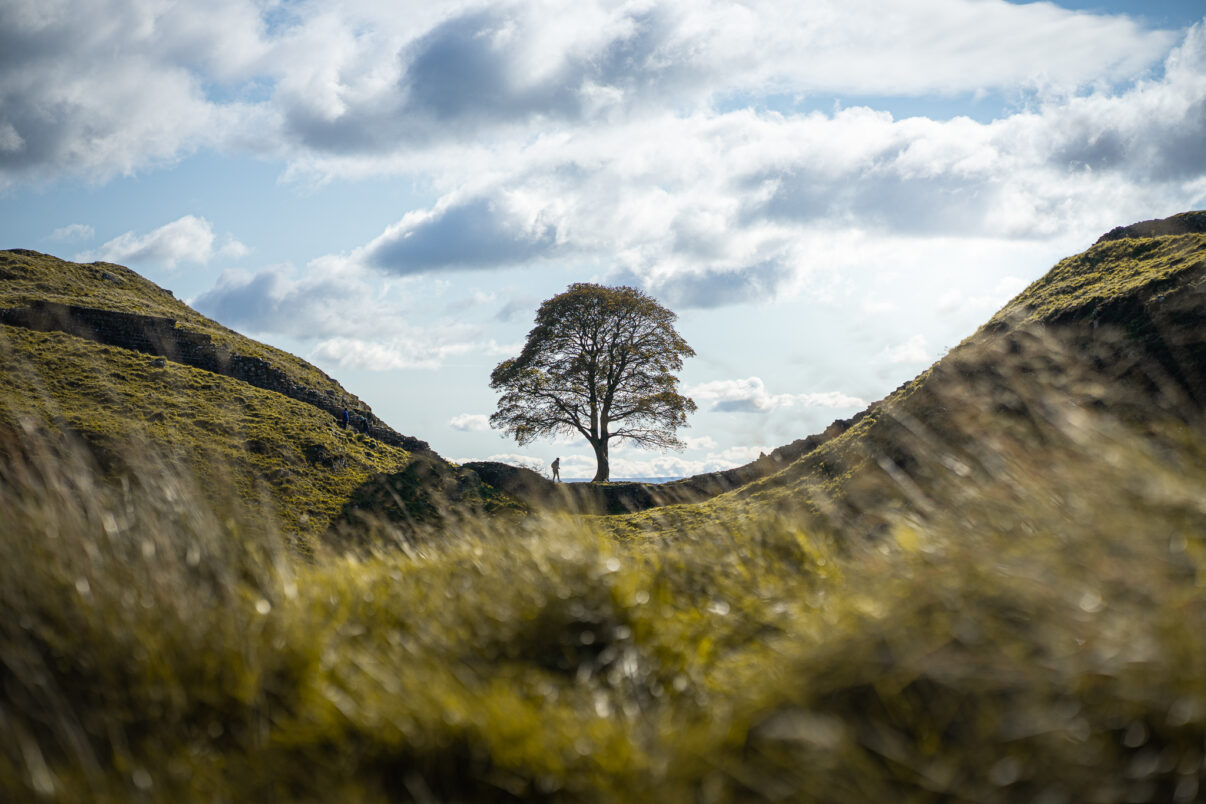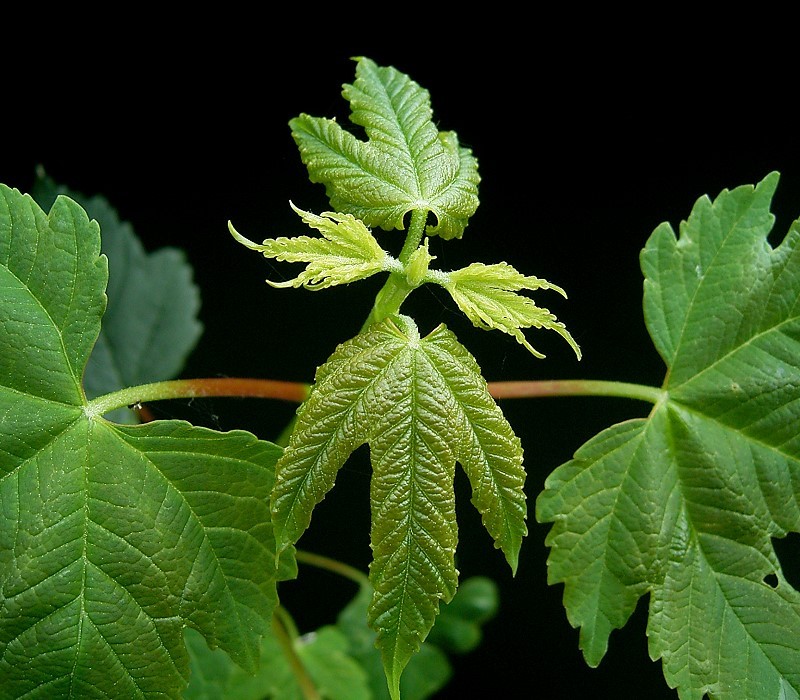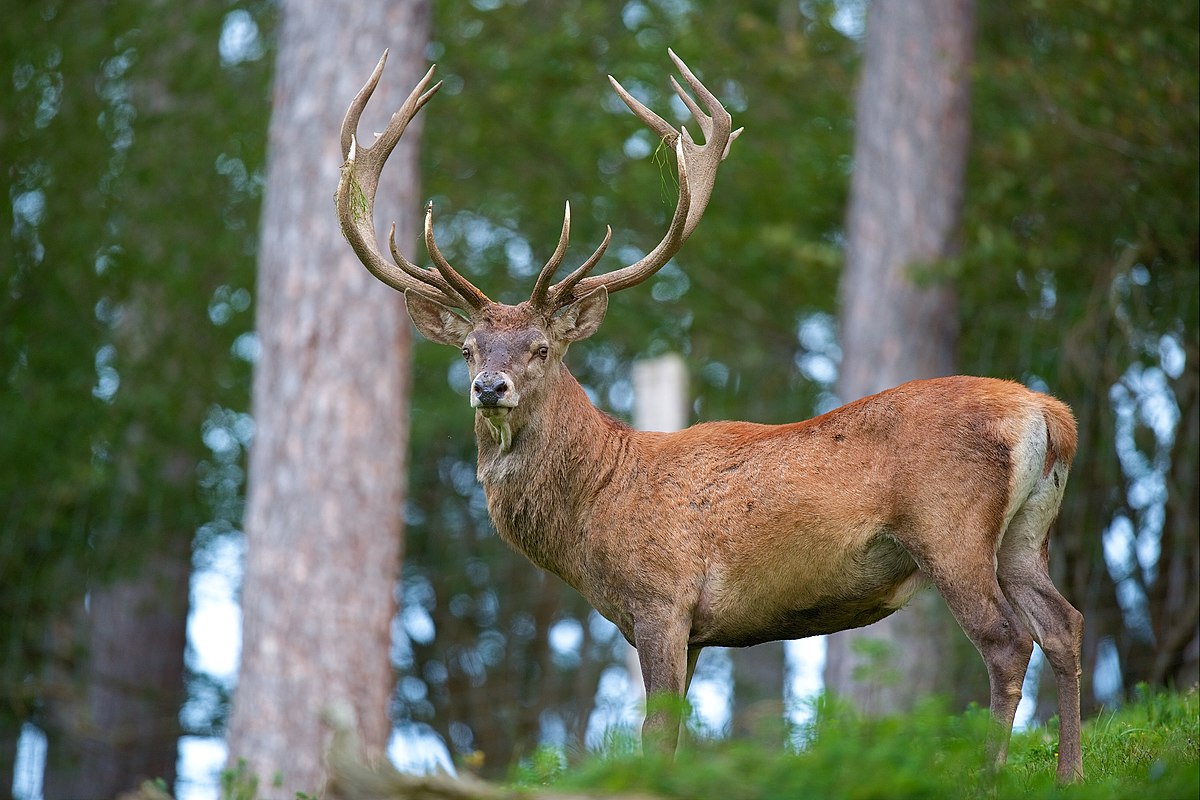Sycamore maple is a deciduous tree species that is now found in Northern Europe, raising questions about its status as an invasive species and prompting a deeper examination of its ecological role. Sycamore supports a diverse range of species, challenging the notion that it harms native ecosystems. Rather than viewing sycamore as a pest, rewilding proposes managing its dominance through restoring natural processes like diverse herbivore populations and reducing human-induced disturbances.
This article is written by Søren Thomsen, National Contact for Denmark for the European Young Rewilders and consultant at the nature firm AMPHI. He has an MSc in Nature Management from Copenhagen University and runs a small agro-rewilding-tourism project called Sjælegård along with his family. He is also co-founder and writer at The Extinctions.

Introduction to the Species and Predicament
The sycamore maple is a large deciduous tree species found throughout most of temperate Europe. Its native range extends from northern Iberia in the west to the Caucasus in the east and from Sicily in the south to northern Germany and Poland in the north. However, due to human planting efforts, it has spread beyond its native boundaries, now reaching as far north as Norway and Scotland. It has become especially prolific in countries such as the United Kingdom, Denmark (my native country), and the Netherlands. In some British forests, the species comprises over 50% of the trees present, effectively forming a novel ecosystem where it dominates other trees in regeneration. Consequently, many in the UK and Denmark consider sycamore an invasive species. We, too, grapple with an abundance of young saplings in our rewilding project at Sjælegård. This essay offers a different perspective on sycamore in northern Europe, not as an invasive species causing biodiversity problems and ruining native forests but as a species that, in many ways, belongs in northern Europe and contributes to its biodiversity. It has merely come to dominate in the absence of natural processes and its threat to native forests is overstated.
A Non-Native Species?
First, let’s address the status of sycamore as an ‘invasive’ species in northern Europe. The conventional view categorizes species as either ‘native’ or ‘non-native’, but this binary classification oversimplifies the complexities of ecology. Moreover, it carries connotations of ‘native’ being good and ‘non-native’ being bad. Can we truly equate a species that spread from Germany to Denmark a millennium ago with one that invaded from a distant land just a century ago? In the former case, the species interacts with very similar species, maintains many of the same ecological relationships, and shares a long history with its environment. In the latter case, all interactions are completely novel and carry a much higher potential for ecological harm. A more nuanced framework, recently developed by Rhys Lemoine and Jens-Christian Svenning offers a more graduated perspective. This system categorizes nativity into five sections: Natives, new-natives, near-natives, new non-natives, and invasives, further subdivided into ten categories. We will discuss sycamore in the context of categories 2, 4, and 5/6 (see list below).

Natives:
- Historic Native – Historically (between 10,000 and 500 years ago) and naturally present (arrived without human assistance)
New natives:
- Historic Introduction – Historically (between 10,000 and 500 years ago or at a time undetermined) and unnaturally present (arrived with human assistance)
- Natural Migrant – Recent (<500 years), natural migrant (including species that benefit from anthropogenic conditions)><500 years), natural migrant (including species that benefit from anthropogenic conditions
Near-natives:
- Assisted Migrant – Native to adjacent, non- insular (excluding recently connected) regions, which are similar in climate/ ecology or resemble near future conditions
- Prehistoric Native – Prehistorically (before 10,000 years ago) and naturally present (arrived without human assistance)
- Substitute Introduction – Closely related and ecologically similar to an extinct native (same genus or possibly family, subspecies should be treated as the same taxon)
New non-natives:
- Surrogate Introduction – Fills a similar role to an extinct native which is not closely related (no more closely related than Order)
- Beneficial Introduction – Non-native and beneficial (ecologically, rather than socio-economically, which is a separate consideration)
- Neutral Introduction – Non-native and benign (meaning their effects on the ecosystem are neither harmful nor beneficial)
Invasives:
- Invasive Introduction – Non-native and ecologically destructive
Starting with sycamore as a historic introduction, this definition aligns most suitably with the species, given its introduction to many parts of northern Europe, perhaps as early as the Roman era and certainly by the medieval era. The age of introduction matters because of the concept of ‘Naturalization.’ Species that have coexisted with an ecosystem for a long time tend to have co-evolved with native species, forming ecological connections with competitors, symbiotes, and predators. For instance, the European hare and fallow deer, though introduced relatively late to the UK, are considered naturalised in British ecosystems, prized by ecologists and legally protected.
While records show deliberate human introduction of sycamore, it is also possible that it would have naturally migrated to continental northern Europe due to climate change, as areas like The Netherlands and Denmark became more suitable for central European species. In this context, sycamore could be considered an assisted migrant, native to the same biogeographical region as northern Europe, with pre-existing connections to many native species found in Britain, Denmark, and elsewhere.
Considering sycamore in a prehistoric context, during past interglacial periods when climate conditions resembled today, it’s challenging to ascertain its presence in northern Europe. Pollen records do not distinguish sycamore from field maple, thus determining its paleo-range is impossible but other thermophilic species are known from Pleistocene northern Europe. Indeed, Britain hosted at least one species of maple not currently present, the Montpellier maple. This puts sycamore in a comparable situation to the European bison in Britain – a species with no demonstrable record in Britain but close Pleistocene relatives.
The problem with classifying sycamore as invasive is that it occupies a different ecological context than species like black cherry, American mink, or Japanese knotweed. Sycamore has been present in northern Europe for centuries or even millennia, and it has pre-established ecological connections with many native species. In terms of nativity, it makes more sense to view it in a similar context to fallow deer, hare, or European bison.
Biodiversity and Dominance
Setting aside the question of nativity for a moment, let’s consider sycamore purely in ecological terms. Some claim that the species is harmful to native ecosystems and their biodiversity, especially because sycamore can become dominant under the right conditions, outcompeting native species.
First, let’s address the biodiversity value of sycamore in northern Europe. A 2005 review by Andrew Leslie sheds light on this within a British context and the findings are revealing. The number of insect species associated with sycamore is relatively low, but similar to other native species such as lime, hornbeam, and, interestingly, field maple (a native relative of sycamore). While sycamore may lack insect diversity, it compensates with a high diversity of associated British lichens, competing with species like beech, ash, elms, and oaks for the highest diversity. This suggests that sycamore supports a comparable number of species to native species.
Furthermore, aphids are highly abundant on British sycamores and have been recorded to restrict the growth rates of the trees. This suggests that local parasites can affect the fitness of sycamore, challenging the notion of competitive release, a primary mechanism under which invasive species thrive. The abundance of aphids provides valuable food sources for carnivorous insects, fish (when near water), and songbirds. A study on six species of songbirds in a mixed woodland in Durham found that sycamore was the most favoured host tree due to its aphid abundance. In a dune ecosystem in Ireland, areas with sycamore and sea buckthorn supported three times the abundance of nesting birds compared to areas with just sea buckthorn. However, this abundance decreased as the area transitioned to closed-canopy forest.

Dead and diseased sycamores seem to be ecologically valuable in Britain, with 10 beetle species associated with sooty-bark disease a pathogen infecting maple trees and sycamore especially. Several endangered species are also linked with sycamore, including the lichen Teloschistes flavicans, the beetles Synchita separanda and Cicones undatus, and the ants Lasius fuliginosus and Lasius brunneus. The evidence does not suggest that sycamore trees inherently support less biodiversity than ‘native’ species. Isolated sycamore trees are at worst benign and probably beneficial to biodiversity.
It’s essential to also consider forest ecosystems where sycamore dominate. Single-species dominated forests in northern Europe are common and may comprise mainly of oak, beech, birch, ash or other species. Any assertion that sycamore forests must lack biodiversity because the species is dominant is inconsistent with the acceptance of other single-species dominated forests. Additionally, sycamore forests do not form monocultures, but rather support an array of other tree species. While concrete data comparing the biodiversity of sycamore forests to other single-species dominated forests in northern Europe would be helpful, they are unfortunately lacking. However, a study from the French Alps showed that sycamore forests supported a more natural and varied forest structure with a higher conservation value than nearby mixed forests. Therefore, there is little to suggest sycamore forests are inherently worse than other single-species forests in terms of biodiversity.
The issue with sycamore does not appear to be that it is invasive, biodiversity-poor, or necessarily dominant, but rather that it is new. This threatens traditional conservation values, which prioritize preserving longstanding ecosystems. By contrast, under a rewilding framework, there’s little justification for persecuting sycamore forests in favour of other forest types. Rewilding embraces the dynamism of nature, including the transition from one community to another due to changing conditions, range expansions, and contractions.
One often cited issue of sycamore is that it outcompetes ash and is a threat to its continued existence, but an understanding of the forest dynamics of sycamore shows this to be an oversimplification. Sycamore is adept at colonizing forest patches with light available, here it outcompetes most other saplings in the undergrowth. However, sycamore does particularly poorly in low-light conditions and so is dependent on significant disturbances in the canopy to grow. In one study from Suserup skov in Denmark sycamore comprised 40% of saplings in disturbed areas but only 2% outside of them. Another study in Wytham Woods in the UK found that sycamore was unable to establish in minimum intervention ancient woodlands, and only spread to disturbed or younger forests. This stands in contrast to ash which is particularly well-adapted to establish saplings under low-light conditions. The two species occupy different niches. Several studies have found that ash and sycamore may alternate in abundance, with sycamore thriving well in mature ash forests as they have sparse canopies. Conversely the shady mature sycamore trees do not promote establishment of new sycamores but enable ash to grow competitively. Given this ‘Ash-sycamore cycle’, perceived invasions may actually assist in the renewal of ash forests. The study at Wytham woods further found nothing to suggest that the sycamore was ‘outcompeting’ ash, on the contrary ash maintained higher growth rates and remained the primary species.
There is very little suggesting that sycamore is a threat to native ecosystems or a detriment to northern European biodiversity. If anything, the presence of sycamore in various forest types supports a more varied forest composition and structure.
Rewilding and Management
All this is not to argue for an absence of management, but rather a shift away from treating sycamore as an invasive pest. Instead, it should be viewed in the broader context of a near-native species thriving in a world affected by anthropogenic influences and lacking natural processes. Rather than treating the symptom of dominance by attempting manual removal of trees it may be prudent to address the underlying causes. Rewilding offers some interesting solutions.
Sycamore thrives on nutrient-rich soils, making it well-suited to landscapes with nutrient loading from agriculture. While it can tolerate lower nutrient soils, it is less pervasive under such conditions. Reducing nutrient loads may reduce sycamore’s competitiveness. Likewise, given the importance of aphids in limiting growth rates of sycamore, insecticides may also assist in their competitive edge. Another significant factor is habitat availability, sycamore thrives in young forest or closed-canopy forest with significant disturbances (e.g. deforestation) both of which are common in the modern landscapes of northern Europe. Open habitats and old-growth woodlands where sycamores are less competitive have become relatively uncommon by comparison but are being promoted by rewilders and conservationists alike.
Sycamore’s dominance is also curbed by herbivores. The saplings are unpalatable to cattle and toxic to horses, making them troublesome on pastureland. Nevertheless, they are scrumptious to deer (roe & red) and preferentially browsed to most other tree species, this can significantly reduce sycamore populations. Sycamore is vulnerable to debarking, they exhibit very high mortality rates when ‘ringed’ and in Britain bark gnawing by grey squirrels is a common cause of death. Several species of megafauna perform some form of debarking. Horses are known to eat bark during winter, stags and bison will rub their horns against bark and of course beavers gnaw away at bark and softwood. In the Pleistocene such species would have been joined by rhinoceroses, elephants, and more.

Considering all these factors, an effective approach against sycamore dominance is rewilding, specifically the re-establishment of a diverse and abundant herbivore guild. A recent study from India demonstrated that higher megaherbivore diversities are associated with higher resistance to dominance by invading plant species, and this principle likely holds true in Europe as well. Specifically in the case of sycamore, red and roe deer are crucial in supplying a browsing pressure but other species which perform debarking and encourage the maintenance of open habitats are also important. Limiting impacts of intensive agriculture (nutrient loading & insecticides) and forestry in nature areas may also reduce the dominance of sycamore.
References
https://www.nature.com/articles/s41559-023-02181-y
https://link.springer.com/article/10.1007/s10342-008-0202-1
https://academic.oup.com/forestry/article/81/1/59/625590
https://academic.oup.com/forestry/article/82/4/361/547818
https://onlinelibrary.wiley.com/doi/epdf/10.1111/rec.13636
https://annforsci.biomedcentral.com/articles/10.1051/forest:2008058
https://insight.cumbria.ac.uk/id/eprint/624/1/Leslie_TheEcologyAndBiodiversity.pdf
https://besjournals.onlinelibrary.wiley.com/doi/10.1002/2688-8319.12197
https://ies-ows.jrc.ec.europa.eu/efdac/download/Atlas/pdf/Acer_pseudoplatanus.pdf